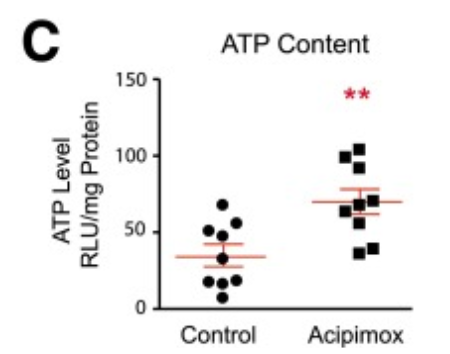Individuals with type 2 diabetes exhibit various complications, one of which is muscle weakness. This can partly be a result of shotty mitochondria, the powerhouse of the cell. These energy-producing structures stimulate metabolism, a process that relies on the essential, energetic coenzyme nicotinamide adenine dinucleotide (NAD+). The life-sustaining functions moderated by NAD+ can be enhanced with NAD+ precursors, at least in animals. However, it hasn’t been proven if NAD+ precursors can replenish NAD+ concentrations and restore mitochondrial function in people, let alone individuals with diabetes.
In an article published in the journal Diabetes, van de Weijer and colleagues from Maastricht University Center of the Netherlands evaluated the NAD+ precursor acipimox in individuals with type 2 diabetes. For the first time, the team of investigators demonstrated that acipimox could restore skeletal muscle cell mitochondria of patients with type 2 diabetes.
“To the best of our knowledge, this study is the first to demonstrate that NAD+ boosters can also directly affect muscle mitochondrial function in humans,” said the researchers in their study. These findings indicate that new and safe NAD+ precursors exhibit a high potential to improve mitochondrial function and promote healthy aging in people.
Clinically approved NAD+ precursor may mitigate mitochondrial health
Acipimox is an analog of nicotinic acid that is utilized to treat hyperlipidemia, a disorder in which there are elevated concentrations of fat particles (lipids) in the blood. However, in addition to its established effects on fat particle breakdown, acipimox is also an NAD+ precursor. Because acipimox is already approved for use in people, van de Weijer and colleagues investigated whether it enhances mitochondrial function by increasing NAD+ concentrations.
Acipimox re-energizes muscle mitochondria in diabetes patients
The investigators examined how acipimox affected mitochondrial metabolism. Overall, muscle biopsies from treated patients exhibited more significant metabolic improvements than patients who didn’t undergo treatment. In addition, treated patients showed elevated concentrations of ATP, a compound that carries the energy required for all cellular metabolic functions.

In addition, these patients exhibited enhanced mitochondrial function after treatment with Apicimox. In animal studies, these results were accompanied by activation of mitochondrial genes that overlap with gene sets caused by NAD+ boosters, including nicotinamide mononucleotide (NMN) and nicotinamide riboside (NR). In muscle biopsies of individuals treated with acipimox, the investigators noted an increase in the activation of genes that promote metabolism. The investigators utilized mouse muscle cells cultured in a dish with acipimox for 24 hours to replicate many of these findings.

In addition, the researchers examined human muscle cell biopsy specimens and cultured mouse muscle cells treated with acipimox and found that there was activation of a signaling pathway that restores and enhances mitochondrial function. NAD+ precursors have been previously demonstrated to activate this mechanism, known as mitochondrial unfolded protein response, in animals but never in humans. “To the best of our knowledge, this study is the first to demonstrate that as in animals treated with NAD+ boosters, the mitochondrial unfolded protein response is present in humans,” said the researchers in the article.
What’s next for NAD+ precursor treatment in humans?
These findings indicate a huge potential for novel, safe NAD+ precursors to improve mitochondrial function in humans. Although acipimox may not be an appropriate candidate, novel NAD+ precursors, including NMN and NR, that lack such side effects like skin flushing – sensation of warmth and quick reddening – may potentially serve as mitochondrial boosters.
Human clinical trials with these compounds are of the upmost importance given therapies targeting mitochondrial function, such as exercise, reduction of caloric intake, and resveratrol, have been demonstrated to be effective in enhancing metabolic health. This research suggests that NAD+ precursors should be studied in human subjects, such as type 2 diabetes, to determine if they can boost mitochondrial function and metabolic health.